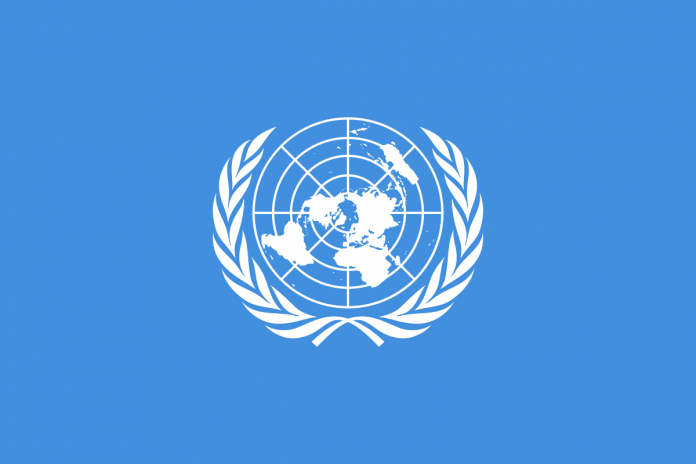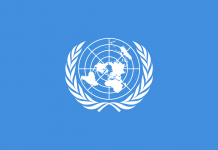This article is written by Anshal Dhiman, from Rajiv Gandhi National University of Law, Patiala. The article talks about the United Nations Environment Programme with respect to the 2030 Sustainable Development Goals, how the body has fared in its resolution and is it a success or a failure.
Table of Contents
Introduction
The United Nations is not one of the most favorite international bodies in the modern age. Many people criticize it for its working and the results that it has failed to produce. But the United Nations Environment Programme (UNEP) is one UN authority that has been doing commendable works in its jurisdiction. The UNEP is now the leading environment body of the world working towards achieving environmental goals and setting the needed environmental agendas for the world. It is the main body that supervises the works related to environmental issues at the global level.
The main directive of the UN Environment Programme is to facilitate the improvement of natural arrangement at worldwide and local levels and to carry arising issues to the consideration of governments and the global-local area. The article will talk about the success of the UNEP and its work towards achieving the Sustainable Development Goals that have been set by the body for global environmental betterment.
History of the UNEP
The United Nations Environment Programme was established in 1972 after the United Nations conference on the Human Environment. The conference on the human environment and the establishment of the environment programme was a big step ahead on the road to protecting the planet from environmental troubles in the future.
The conference on the human environment was the first major conference held by the United Nations which focused solely on environmental issues. The conference was also important because many nations at that time in the 1960s and the 1970s, mostly developing nations, did not want to give their attention to environmental issues and argued that their first priority is to end poverty amongst people and that environmental troubles must not be their priority. Canadian Maurice Strong was the one who managed to convince the developing countries through his strong words and actions that environmental issues need the attention of world leaders and the world leaders need to focus on the issues related to the human environment.
The UNEP was established on the lines of the International Labour Organization (ILO), the World Health Organization (WHO) and the Food and Agriculture Organization (FAO. The establishment of the UNEP was a big achievement for the developed countries since at that time many people were not aware of climate problems and if they had stayed as ignorant as people have been before, maybe the present climate challenges would be even worse. The budget of the UNEP has been another issue though it is not much mentioned nowadays.
Because the UN organizations work on voluntary donations for 95% of its income, not many governments were ready to give money to an environmental organization which at that time seemed like a vague concept to people because of their environmental ignorance, as stated above., and also accompanied by the fact that many third world countries were still trying to overcome poverty and hunger problems, which needed a lot of money itself.
The big developed countries share the major donations, with the USA being the highest donator. Another controversial part of the UNEP establishment was the headquarters location. Nairobi in Kenya was chosen to be the headquarters of the UNEP at first, but it was opposed by the developed countries, as they preferred Geneva in Switzerland to be the location for headquarters of the organization. There was a big debate, with the third world countries supporting Nairobi to be the host of the UNEP while the developed countries pushed for Geneva to be the head location of the UNEP. Cities of Mexico, Delhi and Cairo, who were initially supposed to be involved in the debate for the headquarter location, pulled themselves out of it to support Nairobi in a gesture of third world solidarity. In the end, although perceived as a bit controversial and political, Nairobi was chosen to the headquarters.
UNEP and Sustainable Development Goals agenda
In 2015, the UN General Assembly set a total of 17 inter-related Sustainable Development Goals. These Sustainable Development Goals (SDGs) or also called global goals, were set to achieve a better future for everyone and to make the future sustainable for everyone. A total of 17 Sustainable Development Goals and 169 targets were set and adopted by all the UN members unanimously. This is also known as the 2030 agenda or the agenda 2030. The 17 SDGs set up to be met by 2030 are:
- No Poverty
- Zero Hunger
- Good health and well being
- Quality Education
- Gender Equality
- Clean water and sanitation
- Affordable and Clean Energy
- Decent work and economic growth
- Industry, innovation and infrastructure
- Reducing inequality
- Sustainable cities and communities
- Responsible consumption and production
- Climate action
- Life below water
- Life on land
- Peace, justice and strong institutions
- Partnership for the girls
The UN defined Sustainable Development as “meeting the needs of the present without compromising the ability of future generations to meet their own needs” in a 1983 report called World commission on environment and development, also known as the Brundtland Commission. The objectives are a dire call for activity that perceives that finishing destitution and other advancement challenges should go inseparably with techniques to improve wellbeing and schooling, decrease imbalance, and spike financial development—all while handling the environment emergency and attempting to save the climate.
With barely 10 years left to meet the deadline of 2030, the world needs to hurry up and put more noteworthy endeavors in finding better arrangements, in the event that we are to really change social orders and economies and meet the Sustainable Development Goals.
The climate is at the centre of every single one of the Sustainable Development Goals. Individuals rely upon nature for a wide scope of items and administrations, and the expanding tension on characteristic assets influences the large numbers of individuals who straightforwardly rely upon them for their occupations.
The idea of SDGs was proposed by Colombia in an event held before the eventual United Nations Conference on Sustainable Development, also known as the 20 years followed up to the Earth Summit, or also called the United Nations Conference on Environment and Development, held in 1992 at Rio De Janeiro. At the 2012 Rio conference, the United Nations proposed a resolution called “The Future We Want” and was reached to all members of the UN. It is also important to know that the idea of 17 Sustainable Development Goals was also worked upon around the time of this conference.
After this conference, an Open Working Group (OWG) was set up by the UN to identify the specific Sustainable Development Goals to be considered in the next UN conference. The OWG gave 7 SDGs and 169 targets to be achieved by 2030. 8 Millennium Development Goals were also proposed by the UN supplementary to the already proposed SDGs and targets. But there were some shortcomings found in the Millennium Development Goals which led to them being sidelined and instead the UN worked on the now known as 17 Sustainable Development Goals. The 2030 agenda, officially called “Transforming our world: 2030 Agenda for Sustainable Development” was adopted officially in September 2015 after months of negotiations and ratifications.
UNEP SDGs- Success or failure?
It is a very complicated question to answer whether the UNEP has been successful in its initiative of achieving the set Sustainable Development Goals or not. Although the UNEP has done well in bringing the attention of world governments towards the issues of the human environment, it has not been very successful in the implementation of its policies. The feasible administration of normal assets will be basic for the satisfaction of the SDGs.
Of the 17 Goals proposed by the Open Working Group (OWG), progress towards 12 straightforwardly rely on the supportable usage of regular assets. The latest things of heightening unreasonable misuse and utilization of normal assets will influence their future accessibility also, availability and is in this way liable to obstruct the satisfaction of the Goals, especially annihilation of neediness and just as disturb basic earth framework measures.
Further, as normal assets are naturally interlinked, pathways and approaches intended to achieve one SDG may all things considered improve or block progress towards various others, across the entire range of Goals. The UNEP has not been very successful in reducing climate dangers to humans, which is one of the major objectives behind the establishment of the organization.
Inspecting the SDGs from an asset point of view demonstrates that exhaustive ozone-depleting substance moderation approaches in the farming area can accomplish huge enhancements in supplement productivity enhancements, water reserve funds and moderate biodiversity, while the creation of sufficient what’s more, nutritious food without a favourable SDG strategy setting could expand rivalry for effectively extended assets like water, land and energy. Farming strengthening, timberland and biodiversity preservation, environmental change alleviation, soil wellbeing upkeep, and freshwater Insurance are each included among the SDGs as crucial objectives, yet all involve potential cooperative energies and compromises with different goals. Through their net consequences for asset supply and request, systems for usage should be directed towards the greatest conveyance of co-benefits and relief of compromises across different SDGs and along these lines decide the achievement or disappointment of the all-out activity.
There will be a need to oblige requests for water for drinking, disinfection for all, farming needs, infrastructural necessities and different water concentrated creation measures. With restricted water accessibility, and constant consumption just as a corruption of water assets through family units and modern effluents, the world will confront a shortage of water and will neglect to achieve the SDGs. The initial steps to forestall such asset depletion are accordingly to oversee assets in a supportable way and wisely use them for the satisfaction of the SDGs.
The UNEP has also failed massively to support climate and environmental activists who have been working towards achieving the Sustainable Development Goals set by the UNEP in the agenda. A report from the UNEP itself finds that 908 people who have been environmental activists in one way or another in their life have died in the course of their work, while some of them were murdered. This is also due to lack of governance and accountability from the organization.
The report also mentions the success of the UNEP in increasing laws in nations and internationally too to protect the environment, but the laws have not been implemented well. Issues like global warming, emission reduction, carbon footprint etc. are still very much on the rise and there have not been many working solutions to it in the short history of the SDG agenda. The degrading of oceans is another issue that has not been dealt with well enough. Marine life has been affected by human activities that have degraded their living conditions.
On paper, the 2030 agenda looks very promising and has been appreciated by the bureaucrat. But the implementation, as stated above has let the organization down. It has tried to bring all countries of the world together in order to fight against environmental degradation, but there have not been many practical realities to it.
Conclusion
The United Nations Environment Programme has not been around for as much time compared to other UN bodies, especially the 2030 agenda, and the targets related to Sustainable Development Goals have come up only recently, so there is hope that the organization will improve its working and will hopefully be more successful than it is now. There have been calls to include internet and technology-related targets to the Sustainable Goals as well.
It will be interesting to see if there are amends to the Sustainable Development Goals by 2030, and how the agenda will shape up in the next decade or so. As we push ahead and venture up advancement on the objectives, the multilateral collaboration will turn out to be perpetually essential. Part States, global associations, non-legislative associations and worldwide companies, yet in addition to nearby, local area based common society and little and medium venture, all should participate in characterizing and settling on the arrangements.
References
-
- https://sdgs.un.org/2030agenda
- https://www.unep.org/
- https://www.eco-business.com/opinion/what-the-unep-fi-has-achieved-in-25-years/
- http://sdg.iisd.org/news/unep-performance-report-highlights-value-of-long-term-goal-setting/
- https://www.legalbites.in/functioning-of-unep-sustainable-development-goal/
- https://undocs.org/en/A/RES/2997(XXVII)
LawSikho has created a telegram group for exchanging legal knowledge, referrals and various opportunities. You can click on this link and join:
 Serato DJ Crack 2025Serato DJ PRO Crack
Serato DJ Crack 2025Serato DJ PRO Crack











 Allow notifications
Allow notifications



